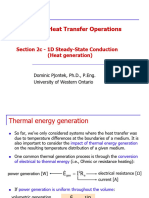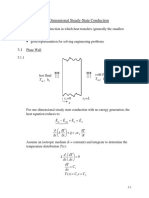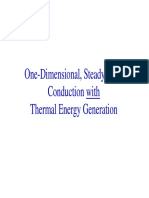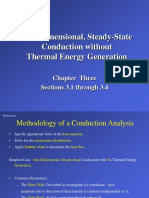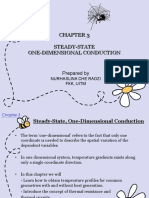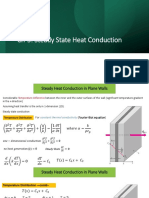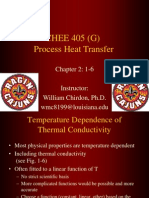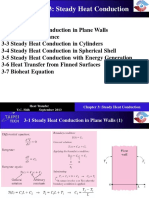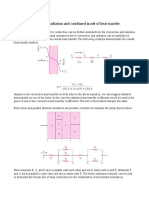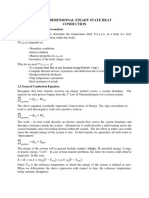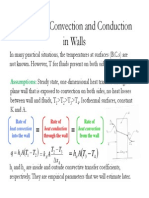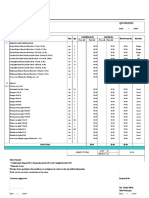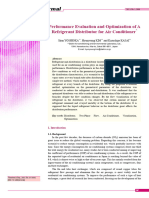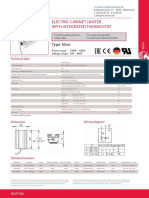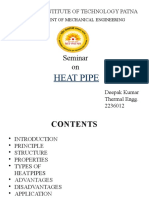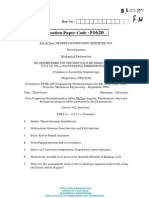0% found this document useful (0 votes)
82 views58 pagesSlide 1 PDF
This chapter discusses steady state one-dimensional conduction in various geometries without thermal energy generation. It presents the heat equation, appropriate boundary conditions, and common temperature distribution solutions for plane walls, tube walls, and spherical shells. Methods for determining heat flux and thermal resistances are also covered. Examples are provided to illustrate the application of these concepts.
Uploaded by
Teeranun NakyaiCopyright
© © All Rights Reserved
We take content rights seriously. If you suspect this is your content, claim it here.
Available Formats
Download as PDF, TXT or read online on Scribd
0% found this document useful (0 votes)
82 views58 pagesSlide 1 PDF
This chapter discusses steady state one-dimensional conduction in various geometries without thermal energy generation. It presents the heat equation, appropriate boundary conditions, and common temperature distribution solutions for plane walls, tube walls, and spherical shells. Methods for determining heat flux and thermal resistances are also covered. Examples are provided to illustrate the application of these concepts.
Uploaded by
Teeranun NakyaiCopyright
© © All Rights Reserved
We take content rights seriously. If you suspect this is your content, claim it here.
Available Formats
Download as PDF, TXT or read online on Scribd
/ 58
